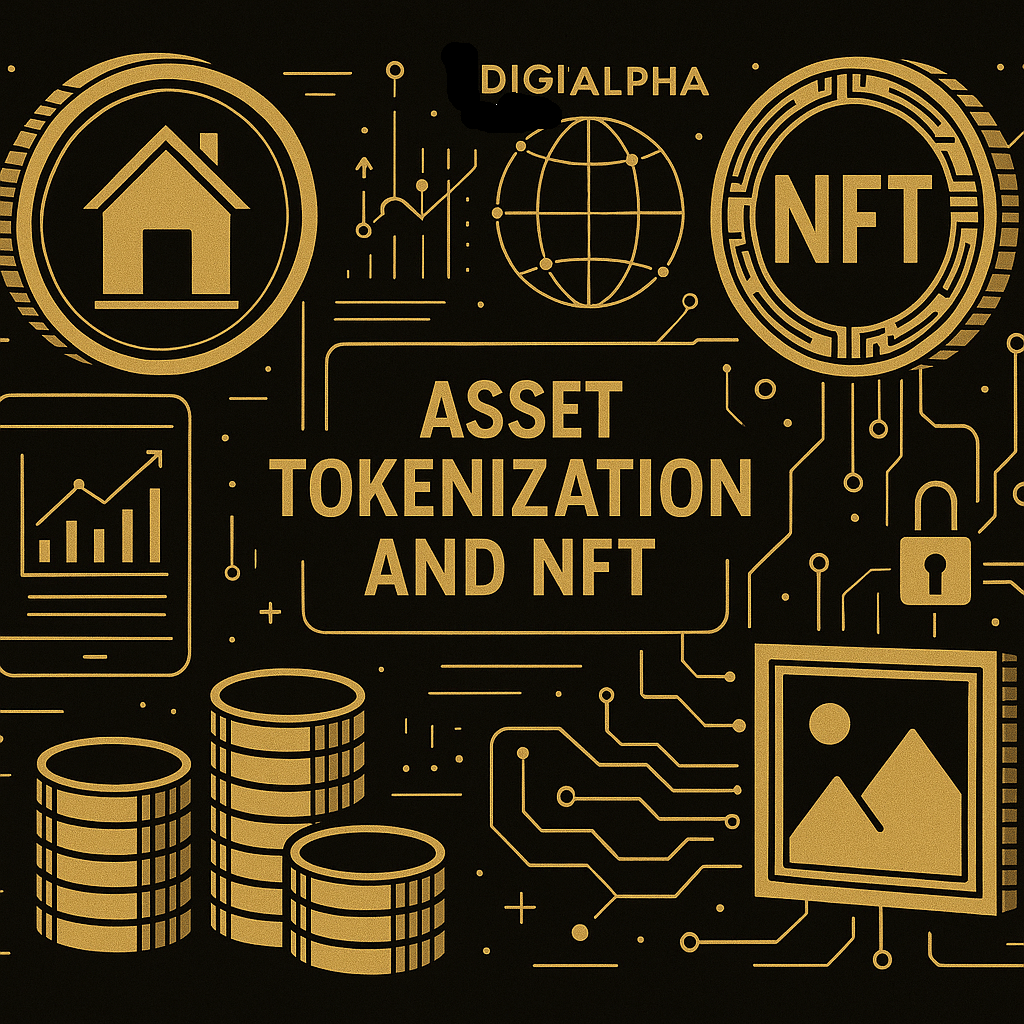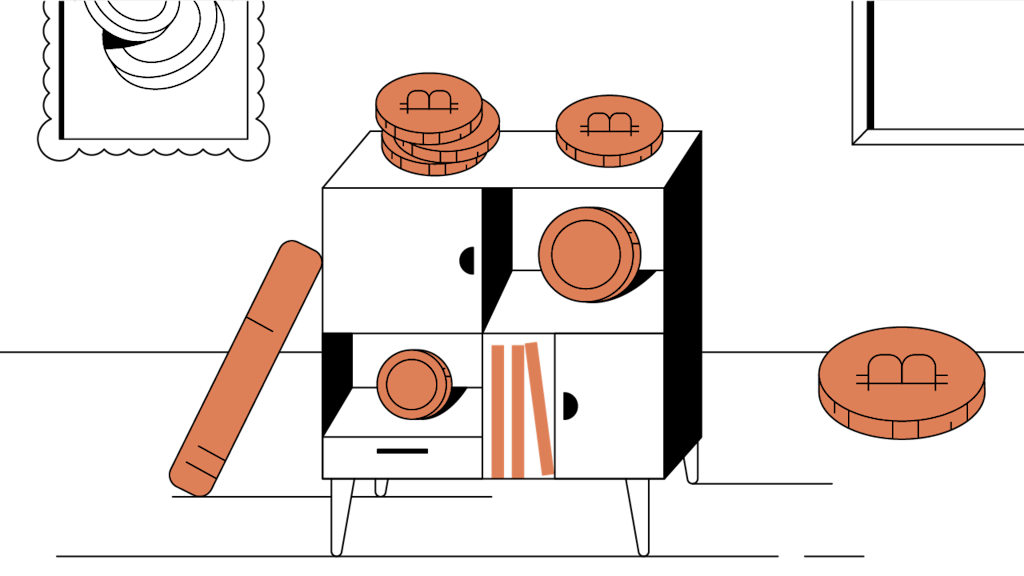Difference Between Asset Tokenization and NFT?

In the world of blockchain, many concepts are introduced, each with a specific use. Two important and widely used concepts are asset tokenization and NFTs (Non-Fungible Tokens). Although both are based on blockchain technology, their goals, features, and uses are completely different.
In this article, we will first explain the difference between asset tokenization and NFTs in simple words. You will understand what role each plays in the digital economy and why it is important to know this difference. Then we will explain each of them one by one with examples to help you understand better.
Asset tokenization vs NFT
Asset Tokenization (RWA) and NFTs both use blockchain, but they are used in different ways. RWA is used to tokenize real-world assets like real estate and attract small investors. On the other hand, NFTs are used to prove ownership of unique items like artwork. These two tools support each other in the blockchain ecosystem and each one covers a different part of the digital economy.
What is asset tokenization?
Asset tokenization is the process of turning real assets such as real estate, company shares, mines, or securities into digital tokens on the blockchain. These tokens represent ownership or rights related to the real asset. To learn more, you can read our detailed article called Step-by-Step Guide to Tokenizing Physical Assets
Key features of asset tokenization:
- Fungible: Tokens made through asset tokenization are usually fungible. This means one token can be exchanged with another one that is exactly the same.
- Divisible: These tokens can be divided. Ownership of the asset can be split into smaller parts. This helps people who cannot afford to buy a full asset like a building or land. They can just buy a part of the tokens and still share in the ownership or profit.
- Liquidity: Asset tokenization makes it possible to turn hard-to-trade assets like real estate or stocks into liquid assets. This means more people can buy and sell them more easily.
- No Intermediaries Needed: People can take part in owning assets without needing banks or brokers.
A Simple Example:
Imagine a 500-square-meter land is divided into 100 tokens. Now, people can buy just 2 or 3 tokens and become part-owners of that land without buying the whole thing.

What is an NFT?
An NFT (Non-Fungible Token) is a unique digital asset that shows ownership of a specific item on the blockchain. Unlike regular tokens that are the same and can be exchanged with each other, every NFT has its own identity, value, and features. It cannot be divided or replaced.
Key features of NFTs:
- Non-Fungible: Each NFT is unique and cannot be swapped with another NFT.
- Unique Identity: Every NFT has a special digital identity.
- Indivisible: You cannot buy part of an NFT; you must buy the whole thing.
- Proof of Ownership: NFTs act like digital ownership documents, especially useful for digital art, collectibles, or special items.
Example:
A digital artist creates a unique image. By turning it into an NFT, they can prove who owns it. The buyer of the NFT gets a kind of digital certificate that proves they are the legal owner.
Make sure to read: The Future of P2P Crypto Exchange Design
The difference between regular tokens and nFTs
We mentioned earlier that tokenization means turning real assets into digital tokens, and that asset tokenization is different from NFTs. Now let’s go deeper and compare regular (fungible) tokens and NFTs.
Fungible tokens like USDT or ETH have equal value. Each unit is the same as another and can be exchanged easily. They are mostly used for financial transactions, payments, and investments.
But NFTs are unique and not interchangeable. Each one has its own features and digital identity. They are used to prove ownership and authenticity of special digital items like artwork, game items, or digital collectibles.
So, if regular tokens are made for easy financial exchange, NFTs are designed to record ownership of unique digital assets.
NFT vs. Tokenization: comparison table
| Feature | Asset Tokenization (RWA) | NFT |
| Type of Asset | Physical (like real estate, shares, bonds) | Digital or special (like art, collectibles) |
| Fungibility | Yes | No |
| Divisibility | Yes | No |
| Main Purpose | Investment and increasing liquidity | Proving ownership and authenticity |
| Suitable For | Small investors, financial markets | Artists, gamers, collectors |
In short, RWA focuses on easier access to investment, while NFTs focus on proving ownership of unique items.
How do NFTs and asset tokens help investors?
Even though the difference between asset tokenization and NFTs is clear, these two digital tools can work together to make the blockchain ecosystem more complete.
NFTs and asset tokenization create new ways to invest by allowing people to own small parts of assets and making it easier to join in. NFTs let investors buy unique digital items, like art or collectibles. Asset tokenization turns real-world things, like property or stocks, into digital tokens that can be shared and traded. Both help more people access investments but focus on different asset types and investor needs.
Example:
For example, in the UAE, investors might use asset tokenization to buy shares of a luxury Dubai property, while NFTs let people invest in unique digital items like virtual real estate or art. Both methods make investing more accessible to different types of investors. To read more, check our Cryptocurrency Tokenomics in Dubai: 2025 Guide.
Conclusion
Understanding the difference between NFT and fungible token helps you see how blockchain is used in different ways. If you want to invest in real assets like land or shares, asset tokenization is a good option. But if your goal is to own unique digital items like artwork or collectibles, then NFTs are the right choice.
Also, DigiAlpha offers custom blockchain design and asset tokenization services, with expert technical knowledge. If you want to digitize your physical or legal assets on blockchain, you can get free advice from DigiAlpha. For more information or to start working together, contact our consultants.
FAQs
1. Is asset tokenization the same as NFT?
No. Asset tokenization is used for real, divisible assets. NFTs are for unique, indivisible digital items.
2. Is an NFT a digital token?
Yes, an NFT is a unique digital token that represents ownership of a specific digital asset.
3. Can I buy part of an NFT?
No. NFTs cannot be divided. You either own all of it or none of it.
4. Who uses asset tokenization?
Small investors, companies, and people who want to invest in real assets like real estate or stocks.
5. Where are NFTs used most?
NFTs are mostly used in digital art, collectibles, blockchain games, and for owning unique digital items.
6. Can a real asset be shown with an NFT?
Sometimes yes, but usually fungible tokens (RWA) are used for real assets.
7. Does owning an NFT mean you own the real item?
Not always; owning an NFT doesn’t always mean you own the actual object or its rights.